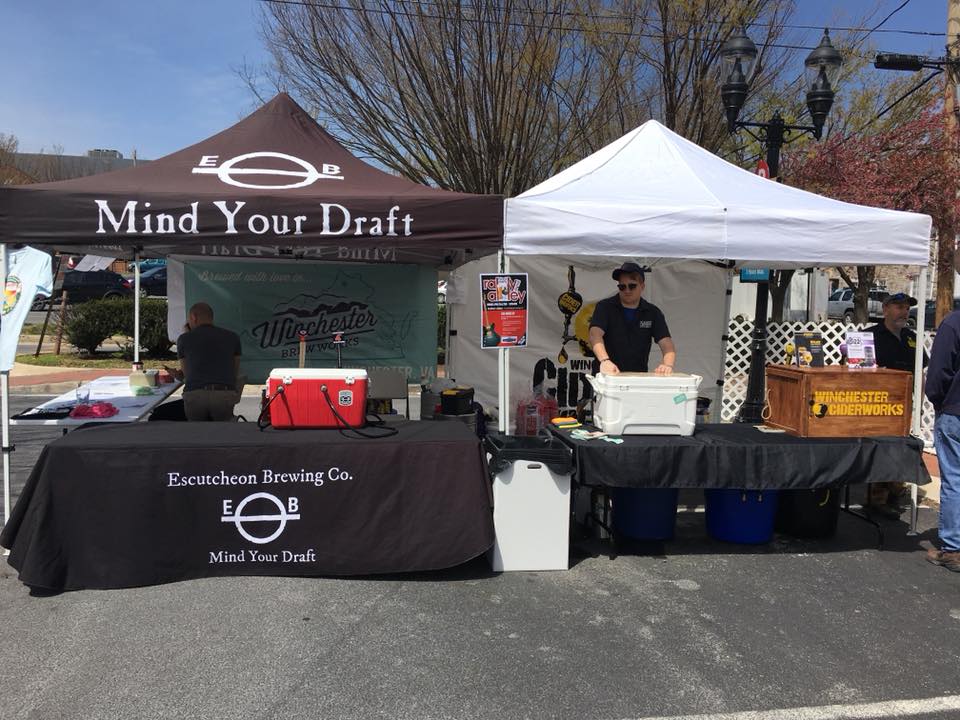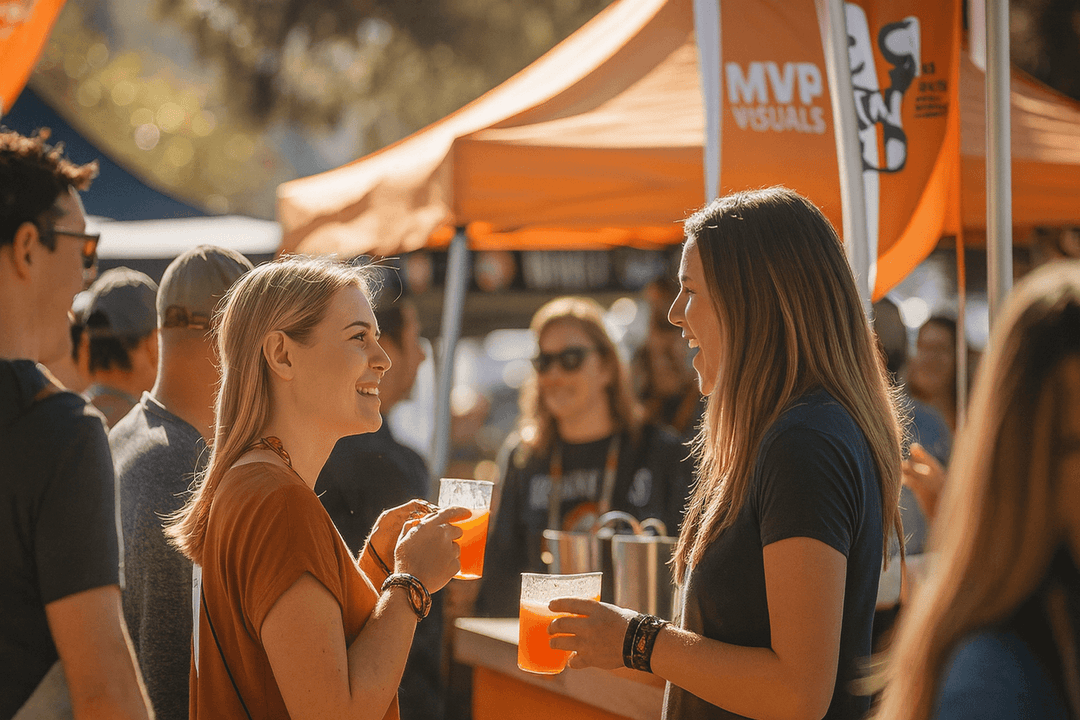If you're planning an outdoor event or setting up a backyard pop-up canopy tent, your first instinct might be to reach for a white canopy to keep things cool.
And you'd be right — color does impact the coolness under the canopy, with white reflecting the most sunlight. But there’s more to staying cool under a canopy than just choosing the right color.
The material and UV protection you choose are equally important. Breathable fabrics like canvas allow better airflow, keeping the area cooler, while polyester denier provides a balance of durability and UV resistance, helping to block sunlight and reduce heat absorption, making the space underneath cooler and more comfortable.
At the same time, UV protection is crucial for shielding you from harmful rays. Lighter colors may reflect sunlight but allow more UV radiation, whereas darker colors combined with UV-resistant materials block more rays, offering better protection for extended outdoor exposure.
 Built to withstand the elements, our polyester denier canopy tents offer UV resistance for ultimate sun protection at your outdoor events
Built to withstand the elements, our polyester denier canopy tents offer UV resistance for ultimate sun protection at your outdoor events
Shop UV Resistant Canopy Tents
Choosing the Coolest Canopy Color: What You Need to Know
The color you choose for your canopy directly influences the comfort beneath it. Whether you need cooling, warmth, or a balance, understanding how colors impact heat reflection and absorption will help you get the result you want.
Light Colors (White, Yellow, Pastels): The Cool Choice

If coolness is your goal, light colors are your best friend. White and yellow canopies reflect up to 80-90% of sunlight, meaning they absorb less heat, keeping the area underneath cooler. These colors are perfect for hot, sunny days where you want to create a comfortable space for guests or workers to stay out of the heat.
-
Outcome: Cooler temperatures under the canopy, Perfect for farmers markets canopies and summer events, where vendors spend long hours outdoors.
Dark Colors (Black, Navy Blue, Dark Green): The Warm Option

On the other hand, dark colors like black or navy blue absorb up to 80-90% of sunlight, which causes a buildup of heat under the canopy. While this may not be desirable in hot weather, these colors are useful in cooler climates where retaining some warmth can make the space beneath more comfortable.
-
Outcome: Warmer under-canopy temperatures, ideal for cool weather events and outdoor restaurant tents where creating a cozy, shaded environment keeps guests comfortable..
Mid-Tone Colors (Green, Red, Gray): The Balanced Choice

Mid-tone colors strike a balance between reflecting and absorbing sunlight. These colors offer a compromise if you want to avoid excessive heat but still don’t want the bright glare of white. Greens, reds, and grays absorb a moderate amount of sunlight, keeping things warm but not too hot.
-
Outcome: A balance between warmth and cooling, making them versatile for both moderate climates and mild sunny conditions.
Now that we’ve explored how colors impact the heat beneath your canopy, let’s take a closer look at how they perform when it comes to UV protection.
Canopy Color and UV Protection: Don’t Overlook It
While lighter colors like white and yellow reflect more sunlight and keep things cooler, they allow more UV radiation to pass through, offering less protection from the sun.
In contrast, darker colors, such as black and navy blue, absorb more heat but block a higher percentage of UV rays, making them a better choice for sun protection despite the warmer temperatures underneath.
The Trade-Off:
-
Light Canopies: Reflect up to 80-90% of sunlight, keeping you cooler, but they block only 30-40% of UV rays.
-
Dark Canopies: Block up to 90% of UV rays, providing stronger protection, but they also absorb more heat, warming the area beneath.
Finding the Right Balance
To achieve both coolness and UV protection, consider these options:
-
Mid-Tone Colors (Green, Red, Gray): These colors strike a balance by reflecting heat moderately while blocking a decent amount of UV rays, making them versatile for mild conditions.
-
UV-Blocking Materials: Canopies with UV-resistant fabrics like vinyl-coated polyester can block up to 99% of UV radiation while providing durability.
-
Treated Light Colors: Light-colored canopies treated with UV-blocking coatings offer cooling benefits while still providing adequate UV protection.
Which Canopy Color Keeps You Cool? Heat & UV Protection Chart
|
Color |
Heat Absorption |
UV Protection |
Ideal Use Case |
|
White |
10-15% (Very Low) |
~20-30% (Low) |
Hot weather, maximum cooling |
|
Yellow |
20-30% (Low) |
~30-40% (Low to Moderate) |
Warm weather, good cooling |
|
Orange |
30-40% (Moderate) |
~40-50% (Moderate) |
Balanced heat and UV protection |
|
Pink |
30-40% (Moderate) |
~40-50% (Moderate) |
Warm weather, moderate protection |
|
Red |
40-50% (Moderate to High) |
~50-60% (Moderate) |
Warm climates, more sun protection |
|
Green |
40-50% (Moderate) |
~50-60% (Moderate to Good) |
Balanced heat and UV protection |
|
Blue |
50-60% (Moderate to High) |
~60-70% (Good) |
Moderate climates, good UV protection |
|
Purple |
50-60% (High) |
~60-70% (Good) |
Moderate climates, good UV protection |
|
Brown |
70-80% (Very High) |
~80-90% (Very High) |
Cold weather, high sun protection |
|
Gray |
40-60% (Moderate to High) |
~50-70% (Moderate to Good) |
Versatile, balanced protection |
|
Black |
80-90% (Very High) |
~90% (Very High) |
Cold weather, maximum sun protection |
But Color and UV Protection Aren’t Everything: Material Matters Too
While the color of your canopy plays a significant role in how cool or warm the space underneath feels, the material of the canopy is just as crucial. Different materials offer varying levels of breathability, cooling efficiency, and UV protection.
Let’s break down the most common canopy materials and what you should consider when making your choice:
Polyester
-
Cooling Efficiency: 60-70%
-
Polyester is a lightweight and durable option but tends to trap heat more than other materials. However, lighter-colored polyester reflects sunlight better, which can help reduce the temperature under the canopy.
-
-
UV Protection: 70-85%
-
Polyester provides moderate UV protection and can block more UV rays when treated with UV-blocking coatings.
-
 MVP Visuals' canopies are constructed with durable 600 denier polyester, offering superior UV protection and keeping the area underneath cooler.
MVP Visuals' canopies are constructed with durable 600 denier polyester, offering superior UV protection and keeping the area underneath cooler.
Shop Polyester Denier Canopy Tents
Canvas (Cotton or Blended)
-
Cooling Efficiency: 80-90%
-
Canvas is a highly breathable material that allows for better airflow, keeping the area underneath significantly cooler. It’s an excellent choice for hot environments or long-term setups.
-
-
UV Protection: 50-60%
-
Canvas typically offers less UV protection unless treated with special coatings to block more harmful rays.
-
Polyethylene
-
Cooling Efficiency: 60-70%
-
This lightweight material offers moderate breathability and decent cooling. However, it’s not as efficient as canvas or treated polyester when it comes to maintaining cooler temperatures.
-
-
UV Protection: 60-70%
-
Polyethylene provides moderate UV protection, which can be enhanced with UV-resistant coatings.
-
Nylon
-
Cooling Efficiency: 50-60%
-
Nylon is a lightweight fabric but tends to trap more heat compared to other materials, making it less suitable for hot climates.
-
-
UV Protection: 60-70%
-
Nylon offers moderate UV protection, though it’s generally less effective than polyester or vinyl-coated options.
-
How to Choose the Right Canopy Color: General Guidelines

When selecting a canopy color, it’s important to factor in temperature control, UV protection, and the event’s overall ambiance. Here are some general guidelines to help you make an informed decision:
Light Colors for Coolness and Comfort
Light colors such as white, yellow, and light blue are ideal for hot climates where keeping cool is crucial. These colors reflect up to 80-90% of sunlight, ensuring a more comfortable environment beneath the canopy.
-
Ideal for: outdoor weddings, beach festivals with food concession tents , and long summer gatherings.
-
Consideration: Light colors offer less UV protection, so consider adding sunscreen or UV-blocking treatments to protect your guests.
Dark Colors for UV Protection
Dark colors like black, navy blue, and dark green excel at blocking UV rays, providing up to 90% protection. However, they absorb more heat, making the canopy area warmer.
-
Ideal for: Cooler climates or events where sun protection is crucial, like outdoor festivals.
-
Consideration: Use darker colors where warmth is beneficial, but be mindful of heat buildup.
Mid-Tone Colors for Balance
Mid-tone colors such as green, red, or gray strike a balance between heat absorption and UV protection. They offer moderate temperature control, making them versatile for various conditions.
-
Ideal for: Fairs, corporate events, or moderate climates.
-
Consideration: Mid-tones provide a compromise, but they won’t be as effective as light colors for cooling or dark colors for UV protection.
Choosing Based on Climate
For hot, sunny locations, light-colored canopies are best to keep temperatures down. In cooler or windy environments, dark colors provide warmth and superior UV protection.
Color and Aesthetic Appeal
In addition to practical considerations, the color of your canopy affects the overall feel of your event:
-
Neutral and light tones (e.g., white, beige) are perfect for formal events like weddings.
-
Bold colors (e.g., red, blue) are ideal for energetic settings like festivals or sporting events.
-
For corporate events, brand-specific colors can enhance visibility and reinforce your presence.

Making Canopy Color Work for You
Choosing the right canopy color is about more than just aesthetics - it’s a careful balancing act between comfort, protection, and event ambiance.
While lighter colors excel at keeping things cool, they may expose you to more UV radiation, and darker colors offer superior UV protection but can trap heat. However, it’s not just about heat or UV; color also influences how your event feels to guests. So, instead of focusing solely on one factor, consider your specific climate, event duration, and guest expectations.
The key takeaway: the smartest choice often involves finding the right middle ground - mid-tones or treated fabrics - that blend comfort and protection while enhancing your event’s atmosphere.



